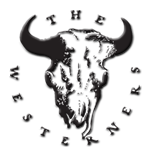Roundup: July 13 2022
july22_roundup
Roundup Synopsis
July’s Roundup had Denny Thompson take us out on a history of Dodger Stadium. We enjoyed complimentary peanuts and Cracker Jack, but it was hard to root, root, root for the home team as Denny recounted the murky circumstances surrounding the Dodgers’ acquisition of the stadium site—the once vibrant community of Chavez Ravine. City councilman Julián Chávez purchased the rugged ravine in 1844. From its beginnings, Chavez Ravine was a refuge for many peoples. In the 1850s, it hosted a “Pest House” for Chinese and Mexican smallpox victims. Jewish-Americans settled the ravine in the 1860s, but were forced to relocate their cemetery to make room for oil derricks. By 1900, the area was largely Latino, closely knit, and civically engaged. Denny’s own father and grandparents lived in the Ravine at this time, between 1907 and 1922, before winning a dairy farm in Santa Clarita in a poker game. Chavez Ravine residents won a victory against the oil companies in 1926, when the city council banned industry there. However, the community could not resist the next challenges to its integrity. After WW2, city authorities designated Chavez Ravine a “blighted” neighborhood in need of redevelopment. In 1949, the new Los Angeles Housing Authority secured federal funding to build a public housing project on the site. Utilizing eminent domain, the city purchased the land for $10,300 per property. Homeowners felt pressured to accept this price, which dropped if they held out. As consolation, all former residents were promised preferential placement in the proposed housing project upon completion. Yet by the early 1950s, a specter haunted Los Angeles—the specter of communism. At least, that is how it was seen through the redtinted lens of McCarthyite paranoia. Several prominent “Citizens Against Socialistic Housing,” including then-actor Ronald Reagan, successfully pushed for a referendum that killed the Chavez Ravine housing project in 1952. However, Los Angeles had signed a housing contract with the U.S. government, and in 1954 the Feds only agreed to resell the property to the city for $1.3 million on condition the land be used for “a public purpose.” For 22-year-old city councilwoman Roz Wyman, that purpose was obvious. Los Angeles was a “Big League town” without a Big League baseball team, and needed one badly. Fortuitously for her, the Brooklyn Dodgers were an A-grade team with a D-grade home stadium. Wyman encouraged the Dodgers to move to L.A. in 1957, and team owner Walter O’Malley purchased Chavez Ravine from the city for $494,000 in order to build a new stadium. A 1958 ballot initiative to block the purchase narrowly failed, partly due to wording that confused voters. Sheriffs forcibly evicted the last remaining ten families from Chavez Ravine on May 9th, 1959, a day called “Black Friday” by some. Photos of the Archiga family being dragged out of their home made national headlines, but public sympathy diminished with the revelation that the family owned other properties elsewhere in L.A. Construction of Dodger Stadium was completed in 1962, to the tune of $20 million. The human cost was the exile of a thousand families from Chavez Ravine, the result of broken promises. No alternative public housing project was ever offered. These families were scattered all across Los Angeles, with many members having to split up as dictated by the availability of jobs and housing. The Dodgers, meanwhile, took two decades to find acceptance among Latino Angeleños, but the recruiting of Mexican southpaw pitcher Fernando Valenzuela finally broke the ice in 1980. The community of Chavez Ravine is now a fading memory, but their story is a timeless one concerning questions of eminent domain, public housing, and “public purpose” private property. Many thanks to Denny Thompson for this fascinating discussion. — John Dillon
Photos from the Roundup
TBD



